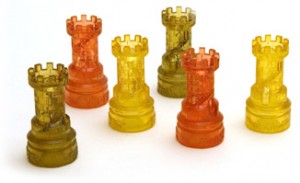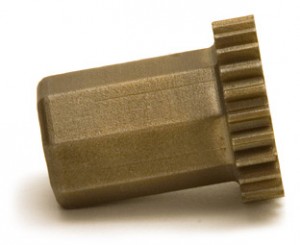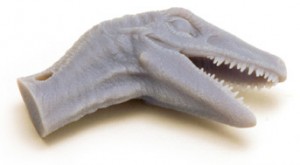This is the 6th in a series of FAQs. Topic #6 – What level of dimensional tolerance accuracy can rapid prototyping produce? Attainable dimensional tolerances depend on the choice of technology used to make the prototype or part.
The most requested rapid prototyping processes by ProtoCAM’s customers include: stereolithography, selective laser sintering, urethane casting, RTV molding, and Polyjet 3D printing.
As with other factors in selecting an additive manufacturing method, the process choice depends mainly on the intended application or use for the prototype. Our engineers can help determine the most appropriate choice based on project requirements such as mechanical stresses to which the part will be subjected, fit accuracy requirements, and aesthetic needs. Typically, dimensional tolerance is an important consideration if the part is going to be used in production, or it has to fit exactly with other parts.
 Stereolithography provides the tightest dimensional tolerances of any rapid prototyping/additive manufacturing technology. Published tolerance s for stereolithography (SLA) are +/- 0.005” (0.127mm) for the first inch, and an additional 0.002″ for each additional inch. Part geometry and build orientation can also have an effect on tolerances. If dimensional tolerance is a critical factor, SLA is typically the best choice.
Stereolithography provides the tightest dimensional tolerances of any rapid prototyping/additive manufacturing technology. Published tolerance s for stereolithography (SLA) are +/- 0.005” (0.127mm) for the first inch, and an additional 0.002″ for each additional inch. Part geometry and build orientation can also have an effect on tolerances. If dimensional tolerance is a critical factor, SLA is typically the best choice.

Selective laser sintering provides good dimensional tolerances as well. The typical published tolerances for non-metalic laser sintered part are +/- 0.007” (0.1778mm) for the initial inch, and 0.003” (0. 0.0762mm) for each additional inch.
 Polyjet 3D printing is typically not a good choice where dimensional tolerance is an important consideration, nor is any casting or molding technique. ProtoCAM excels at helping customers with tough engineering/design questions like this.
Polyjet 3D printing is typically not a good choice where dimensional tolerance is an important consideration, nor is any casting or molding technique. ProtoCAM excels at helping customers with tough engineering/design questions like this.
As always, to find out the specific answer to your question about dimensional tolerances for your project, just contact us!
